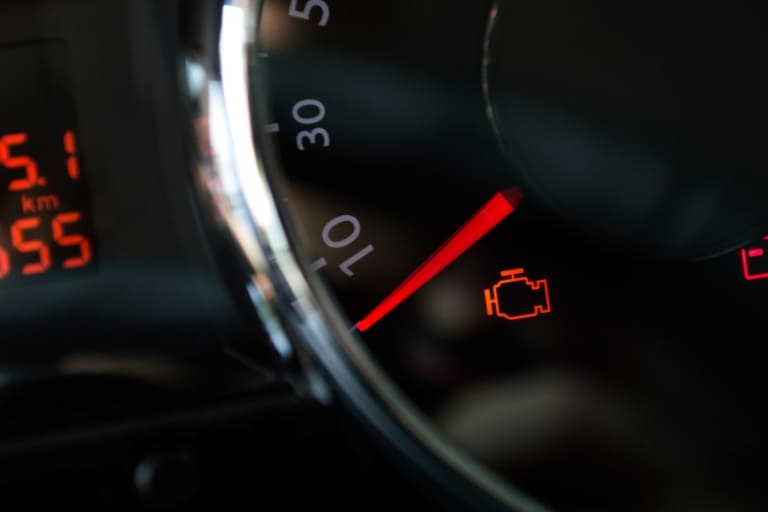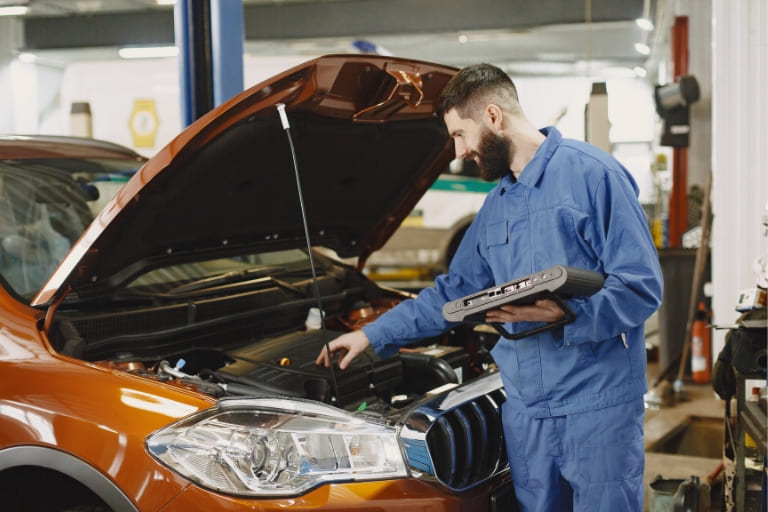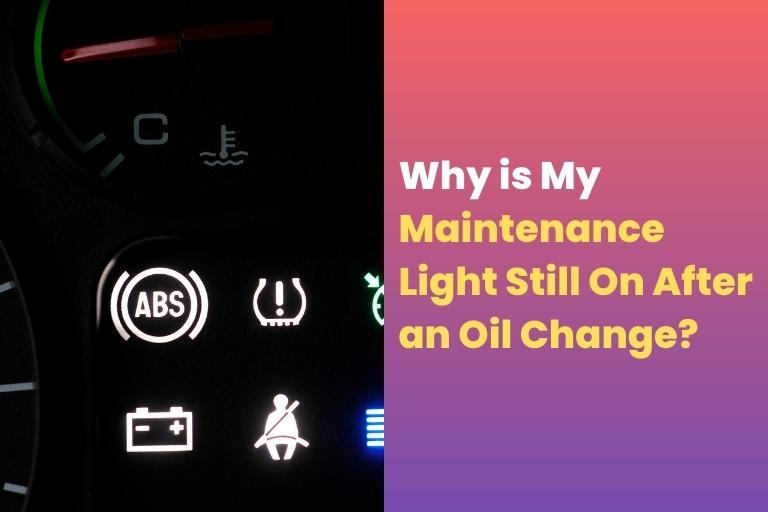Hey there, fellow car enthusiasts! As an automotive expert, I’m sure you’ve experienced the frustration of changing your oil only to find that the maintenance light is still on. Trust me; you’re not alone! This common issue can happen to anyone, whether you’re a seasoned mechanic or a newbie DIYer. But why does this happen? And more importantly, how do you fix it?
In this article, I’m going to give you the lowdown on why your maintenance light may still be on after an oil change and the steps you can take to fix it. So buckle up, and let’s get started!
Contents
Common reasons why the maintenance light is still on

Let’s understand why that maintenance light might still be shining after your oil change. There are a few common culprits, so let’s break them down:
The oil Counter Was Not Reset
One of the most common reasons the maintenance light stays on after an oil change is simply that the oil counter wasn’t reset. Many modern cars have an oiled counter that keeps track of the miles driven since the last oil change and alerts you when it’s time to change the oil again. If this counter isn’t reset after an oil change, it will continue to count up and eventually trigger the maintenance light. The good news is that resetting the oil counter is usually a simple process that can be done with a few button presses or through the car’s settings menu.
Wrong Oil Cap Fitting
Another possible cause of the maintenance light staying on after an oil change is a wrong oil cap fitting. The oil cap is responsible for sealing the oil filler neck and preventing dirt, debris, and other contaminants from entering the engine. If the oil cap isn’t fitted properly, it can lead to oil leaks or contamination, which can cause a decrease in oil pressure and trigger the maintenance light. It’s crucial to ensure the oil cap is fitted correctly to avoid these issues.
Unsettled Dipstick
An unsettled dipstick can also cause the maintenance light to come on after an oil change. The dipstick is used to measure the oil level in the engine, and if it’s not seated properly, it can give an incorrect reading of the oil level. This can cause the driver to add too much or too little oil, leading to low or high oil pressure, triggering the maintenance light. So, check the dipstick and ensure it’s seated properly before checking the oil level.
Low Oil Pressure
Low oil pressure is another possible reason for the maintenance light to come on after an oil change. Oil pressure is essential for ensuring proper lubrication and preventing engine damage, and if the oil level is too low or the oil pump isn’t working correctly, it can cause low oil pressure. It’s important to check the oil level and ensure the oil pump works correctly to avoid low pressure.
Excessive Oil or Wrong-Grade Oil
Using too much oil or the wrong grade of oil can also cause the maintenance light to stay on after an oil change. Too much oil in the engine can foam and lose its lubricating properties, leading to increased wear on engine components and decreased oil pressure. Likewise, using the wrong grade of oil can lead to decreased oil pressure and increased wear on engine components. It’s essential to use the correct amount and grade of oil the manufacturer recommends to avoid these issues.
So, there you have it, folks! These are some common reasons your maintenance light might still be on after an oil change. Fortunately, you can fix most of these issues, so don’t fret! Follow our expert advice, and you’ll be back on the road soon.
How to fix if the maintenance light is still on after an oil change

The process can vary depending on the make and model of your car, but I’ll give you some general steps to follow.
First, see your owner’s manual or contact your dealership for specific instructions for your vehicle. This is important because some cars have unique resetting maintenance light procedures.
In many cars, the maintenance light can be reset by turning the ignition key to the accessory position (where the radio and other accessories are on but the engine is not running) and then pressing and holding the trip meter reset button until the maintenance light turns off. Some cars require you to press the button several times or hold it for a while.
If your car has a touchscreen display, you may need to navigate to the maintenance or settings menu to find the option to reset the maintenance light. Again, refer to your owner’s manual or contact your dealership for specific instructions.
Resetting the maintenance light does not change the oil or perform any maintenance on your car. It tells the car’s computer that an oil change has been performed and resets the countdown until the next change is due.
If you feel uncomfortable resetting the maintenance light, you can always take your car to a mechanic or dealership.. They can also perform any other necessary maintenance on your car while you’re there.
Remember, resetting the maintenance light after an oil change is important to ensure that your car’s computer accurately tracks when your next oil change is due. This will help you avoid unnecessary warnings or reminders and keep your car running smoothly.
Also, Read:
- Why Is My Car Ac Not Working After an Oil Change?
- Why Your Car has Rough Idle after an Oil Change?
- Why Is My Car Sputtering After an Oil Change?
- Why Does the My Car Feel Sluggish After an Oil Change?
- No Oil on The Dipstick After the Oil Change? Here Is Why!
- Why Is the Engine Ticking/knocking After the Oil Change?
Conclusion
Well, that’s it for today! We’ve covered a lot of ground on what to do if your maintenance light is still on after an oil change. Remember, the maintenance light is there to help you keep your car running smoothly and prevent any major issues down the line. By taking the time to troubleshoot and fix the problem, you can ensure that your car is in top shape and ready for the road ahead.
To recap, we looked at five common reasons why the maintenance light might still be on not resetting the oil counter, using the wrong oil cap fitting, an unsettled dipstick, low oil pressure, and excessive or wrong-grade oil. We also discussed resetting the maintenance light, including consulting your owner’s manual, pressing specific buttons, or taking your car to a mechanic or dealership.
In the end, maintaining your car is all about being proactive and taking care of issues as soon as they arise. By following these guidelines and staying on top of your car’s maintenance needs, you can help ensure it operates well for years.
